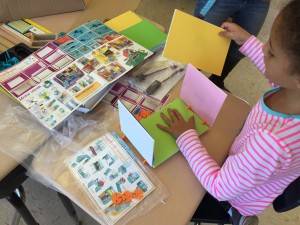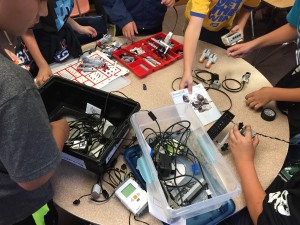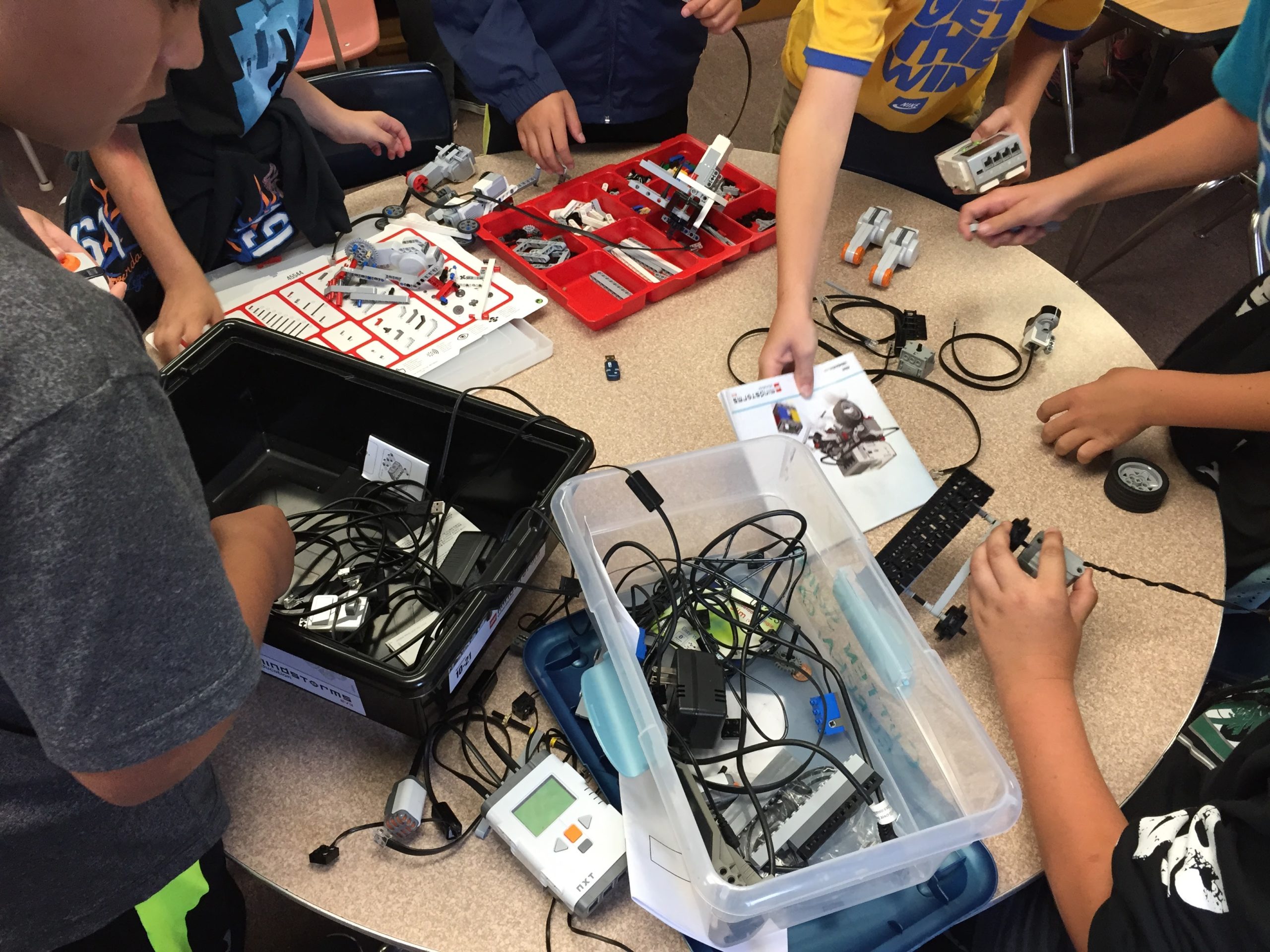 Science has always been about making things. Since the beginning of human attempts to understand the world, scientists, both formal and informal, have made observations, which led to making theories, and in turn to making tools needed to test the validity of those theories. In recent years that want to make sense of the world has taken form with the development of the Maker Movement. This movement, which can be described as creative tinkering with a purpose (even if that purpose is whimsy) has captured the imagination of creatives the world over; young and old, student and teacher. The appeal of Making is ripe for use in engaging, meaningful science lessons thanks to the hands-on, inquiry based nature of the Next Generation Science Standards (NGSS), adopted in California in fall 2013. This month I will share a few ways the Maker Movement can be used in conjunction with the NGSS to further student understanding of science in the classroom.
Science has always been about making things. Since the beginning of human attempts to understand the world, scientists, both formal and informal, have made observations, which led to making theories, and in turn to making tools needed to test the validity of those theories. In recent years that want to make sense of the world has taken form with the development of the Maker Movement. This movement, which can be described as creative tinkering with a purpose (even if that purpose is whimsy) has captured the imagination of creatives the world over; young and old, student and teacher. The appeal of Making is ripe for use in engaging, meaningful science lessons thanks to the hands-on, inquiry based nature of the Next Generation Science Standards (NGSS), adopted in California in fall 2013. This month I will share a few ways the Maker Movement can be used in conjunction with the NGSS to further student understanding of science in the classroom.
Making it Happen
Makerspaces have popped up all over the place in recent years, from libraries to museums. But even if you can’t afford a 3-D printer or a CNC machine, don’t worry, because while they are amazing tools for learning and creating, they are by no means necessary for a makerspace to flourish (FYI, you can now rent time on the brand new MakerBot at the HERC!). Inexpensive and low tech materials can be every bit as engaging for student makers, and the same is true for creating meaningful hands-on NGSS lessons. For instance- Want your fourth grade students to demonstrate energy is transported from place to place (4-P S 3-3) on a budget? Grab some cardboard boxes, small gauge wire, batteries, and a handful of LEDs and you’ve got a robot factory waiting to be brought to life with just a little duct tape and some creativity.
Making Decisions
As students work on projects in a makerspace, a lot of decisions must be made: What is the problem in need of a solution? What math or tech skills are required to arrive at a final product? What potential design fixes exist? Each of these questions are found in the NGSS Science and Engineering Practices, one of the three dimensions (or components) comprising the new standards. The eight Practices are skills and knowledge needed to pursue the process of scientific inquiry shared by all studies of science and engineering. With the right support and creative guidance, many of the eight Practices can become part of virtually every makerspace project, and science lesson.
Making Content Come to Life
Another dimension of the NGSS are the Disciplinary Core Ideas (DCI), which include the discipline-specific content of the standards. In addition to physical, life, and earth/space science, the DCI include a fourth content area: engineering, technology, and applications of science. The Framework, which informed the development of the NGSS, includes clearly articulated engineering and technology skills students must possess by the end of grades two and five, as well as middle and high school. These engineering skills include tasks such as identifying a problem in need of a solution, creating solutions with the materials on hand, and considering the environmental and societal impact of a design. Allowing students to pursue solutions through making in addition to, or even in place of, more structured lessons and labs, ensures an authentic learning experience for all students.
Despite the impression given in the news recently, not every student is destined to work in the STEM fields. But in a world increasingly dependent on science and technology to solve complex issues from highly-infectious diseases to climate change, we must build our students’ scientific literacy so they have the ability to make informed decisions as future voters, or even future decision makers. Making is one of the most engaging ways to show students the scientific process and engineering practices are not just important, but also interesting, and most importantly, understandable. Thanks to making, addressing the NGSS can be a creative, interactive process, and that means bringing a little bit of the Maker Movement into your classroom also just makes sense.

